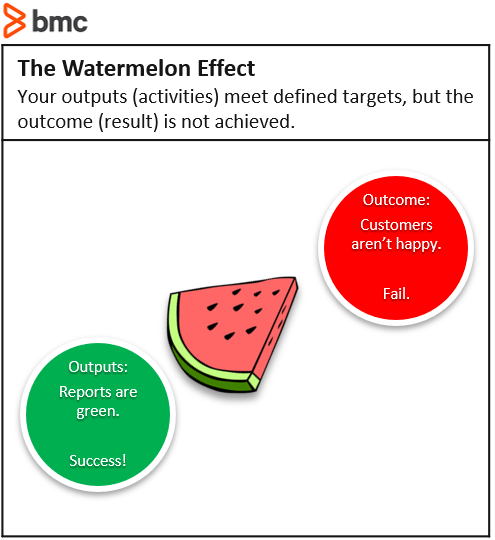As part of the introductions during trainings that I conduct, a common icebreaker I use is worst ride sharing experience.
For the most part, participants will talk about drivers (rude, smelly, creepy, crazy) as opposed to talking about issues with the ride sharing app or billing. Some stories are hilarious, others downright depressing. Yet almost all participants have a particular emotional connection to their experience. And that connection became a very strong determinant of their perception of the service and how they market it to anyone else.
This shows the importance of experiences to customers—and why these experiences must matter to the service provider. This is where XLAs help.
SLAs vs Experience
To understand XLAs, let’s briefly look at SLAs.
In service management, Service Level Agreements (SLAs) have been the main reference point in determining whether the service provider is meeting the expectations of their clients. The ISO 20000 standard defines SLA as a documented agreement between the organization and the customer that identifies services and their agreed performance.
SLAs have primarily been based on service metrics such as:
- Availability
- Capacity
- Reliability
However, one major shortcoming is that the source of the metrics may fail to capture the overall end-to-end experience of the customers. For example, metrics like application availability or transaction success rate might make sense to a service manager. But in the eyes of a customer, these metrics fail to:
- Explain slowness or poor performance during a critical period.
- Capture issues arising from interactions with support staff.
This is known as the watermelon effect: Metrics are green on the outside—good—but red on the inside because of the misalignment between the service provider and the customer as to their perception of the service performance.

What are XLAs?
Enter EXperience Level Agreements (XLAs). Experience Level Agreements put customer experience (CX) at the center of service performance, ensuring that all service interactions and touchpoints are considered when defining whether the service meets the agreed performance level.
ITIL® defines customer experience as the sum of all functional and emotional interactions with a service and service provider as perceived by a service consumer.
XLAs measure business outcomes from the customer perspective. Like SLAs, XLAs look at whether services were available or performed to a certain degree. But XLAs go beyond this, also tracking whether that availability and performance supported the customer to achieve what they wanted.
Measuring XLAs
For any service provider to enter into an XLA with a customer, it means that a holistic approach to measuring service performance not only on the basis of the underlying components’ performance, but also in tandem with customer experience. This requires a clear understanding of:
- The outcomes the customer is trying to achieve.
- The benefits that the customer expects.
- The things that result in a positive feeling for the customer as they interact with the service touchpoints.
Customer feedback is the primary measure used in XLAs. That’s why most digital service providers will ask for a 1 to 5-star rating at the end of each request or issue: to check the level of customer satisfaction. Other XLA measurements include business metrics that measure outcomes, such as job completion times/rate.
Other elements that can be tracked to measure XLAs include:
- Net Promoter Score. How likely the customer would recommend the service to another, measured on a scale of 1 to 10.
- Customer Effort Score. How easy or complex the process the customer underwent in the provision of a service, usually measured on a scale of 1 to 5 or 7.
Challenges with XLAs
There are a few clear challenges with XLAs.
CX is subjective
XLAs measures customer experience. One of the main challenges, however, is that CX can be both objective and subjective. One negative experience—downtime during a critical period, an encounter with a rude support staff—may be enough to cement negative perception permanently.
This would then mean that the company needs to expend a lot of effort trying to change the perception. But, since the customer’s point of reference is that one experience, the service provider is always in a losing position. The customer might also share the experience with others who end up taking up that perception too.
Feedback is difficult to collect
In addition, some users don’t like giving feedback (the primary source of XLA measurement) unless it is from a negative experience. This might mean that the data skews in favor of detractors as opposed to the silent majority who may not have an issue with the service.
Context is necessary
Methods like NPS have shortcomings related to computation if context is not provided.
For example, it makes no difference whether there are 70% promoters and 30% detractors or 40% promoters and 0% detractors, as both result in an NPS of +40. That doesn’t seem logical.
Overcoming XLA challenges
To surmount these challenges, it is important that service providers invest in strong business relationship capabilities that will:
- Ease and promote the process of receiving feedback.
- Expose the various touchpoints where customers interact with the service. This clarifies the customer journey and what is priority from the customer perspective.
Regularly measuring XLAs (rather than once a year) can provide better data on trends related to different seasons and events.
Customer outcome is the value
At the end of the day, service value is driven by fulfilling customer outcomes. If the customer is not happy with any aspect of the service, chances are high that they will reduce or stop spending on the service.
As a service provider seeking to remain valuable in the eyes of your customers, you will need to:
- Manage your services well.
- Ensure that all staff involved are empathetic to the customer.
- Understand what makes customers happy or sad throughout the service lifecycle.
A holistic approach to XLAs that is a truthful reflection of the customer’s actual experience and level of satisfaction is the only meaningful way of understanding and improving service value. When you do this well, you’ll create transcendent customer experiences—one tenet of the Autonomous Digital Enterprise, a forward-looking vision of the future state of business that embraces intelligent, tech-enabled systems across every facet of the business to thrive during seismic changes.
Additional resources
For more on this topic, explore these resources:







